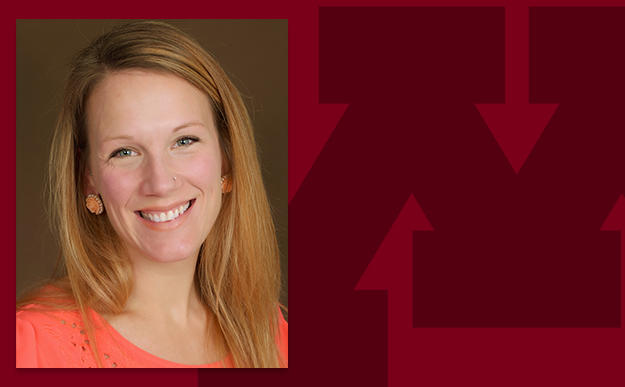Repairing the Oral Health Safety Net for Native American Families

“Is dental care a right or a privilege? What is our responsibility as oral health professionals to address health disparities—especially for children?”
Emily Pietig, DDS ’10, posed these discussion questions to attendees of a Digital Grand Rounds webinar in which she explored the history and current state of oral health care for Native American children and families in Minnesota.
Now in its fourth year, Digital Grand Rounds brings dental professionals together virtually to discuss contemporary topics as a community of experts. The series makes up one component of the School of Dentistry’s commitment to continuing education for alumni and the greater community.
The third and final webinar of the academic year hosted Pietig, who is the dental director of the Native American Community Clinic, a federally qualified health center in the Phillips neighborhood of Minneapolis. Pietig is an associate clinical professor at the University of Minnesota, where she instructed students who partake in their clinical outreach experience at NACC prior to changes necessitated by the COVID-19 pandemic.
Throughout the webinar, which focused on health disparities among the Native American community and how they impact oral health, Pietig stressed the role of historical and generational trauma and its impact on the Native American community in Minnesota and throughout the United States.
“There is a significant oral health crisis facing Native Americans,” Pietig explained, “but this is closely linked to the general disparities we see among this population.”
For example, Pietig referenced the fact that more than ¼ of the Native American population throughout the U.S. lives in poverty—more than double the rate of the general population. That higher rate of poverty, in addition to higher instances of homelessness, repeated loss because of high rates of traumatic, early, and unexpected death, and continuing effects that come from a history of displacement and violence experienced by Native American communities, is directly linked to oral health disparities.
“Dental caries is a disease closely related to poverty,” Pietig explained, noting that income appears to be a contributing factor for oral health decay. She noted that, as of a 2010 study, more than half of Native American children between ages one and five have experienced tooth decay. That’s more than four times higher than the rate of decay among white, non-hispanic children.
“This puts everything into light for me,” Pietig explained. “When you think about oral health disparities, wanting to seek care, and ability to seek it: it’s all connected.”
Pietig acknowledged that the problem is large, and compex, and not easy to solve. “What can we do?,” she asked. “This problem is so large. It’s not a simple fix.”
For Pietig, the fix starts with providing comprehensive and culturally specific care to a community that’s been severely harmed by people who look like her in the past.
“It’s hard for my patients to feel comfortable seeking traditional, in-clinic care because of the history,” she explained. So Pietig focuses on building individual, trust-based relationships with her patients.
Her clinic might look different than what might be expected in a traditional oral health care setting. Patients at NACC are encouraged to bring in their own tradition-based, holistic health solutions. For example, many patients will smudge—engage in the practice of burning sage for its medicinal benefits—while they’re being treated.
Each patient is connected with an advocate, who works with them on insurance, care, and referrals. Each member of the team is trained to understand the unique cultural and historical factors that might impact any given patient they might see—but each patient is seen as an individual, with their own needs.
This cultural and relational focus on oral health care takes hard work and dedication. But for Pietig, it’s worth it.
“In my experience, treating a Native American family, they’ll often come in with reservations about accepting my recommendations and my care,” Pietig explained. “But that’s something I’ve come to really understand and love about this population, and the relationships I form with my patients are so special to me.”
She’s passionate about what she does, and knows it makes a difference. “My experiences in my time practicing have propelled me to reevaluate my profession, and they’ve given me the desire to make a difference on a broader scale,” she said. “That’s why I’ve chosen this profession, and it’s why I’m passionate.”
Pietig’s presentation completes the series for the 2020-2021 academic year. The Digital Grand Rounds 2021 series will resume in September.